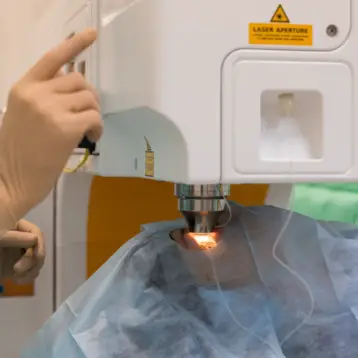|
MAKOplasty can pose as an alternative to the much more invasive full knee replacement for patients with early to mid-stage osteoarthritis of the knee. The revised MAKOplasty procedure now supports implants on the medial (inside) portion of the knee, the patellofemoral (top) portion, or both. Previous systems only supported medial replacements. The full process involves cleaning out the damaged tissue and then inserting one of two MAKO partial knee implants to replace the removed, non-functional portion of the knee.
The system uses a three dimensional model based on a CT scan of the damaged knee to determine exactly where damaged and healthy tissue reside in each patient’s knee. Surgeons can watch a live video of the visualized model of the knee as they operate – the model is also used by the robotic arm to guide surgeons, helping them to perform more precise cuts and avoid accidentally cutting into healthy tissue. Relying on the visual model illustrating where the problematic areas are in any given knee, the robotic arm applies artificial resistance that makes it extremely difficult to move too close to healthy areas.
Once the damaged tissue is removed, surgeons use the same robotic arm to place an implant in the knee that will replace the excised portion of the joint. MAKO offers two versions of its “Restoris” implant, the inlay implant and the onlay implant. Both act as a replacement to lost cartilage; the optimal implant for each patient depends in part on doctor preference and in part on the location and extent of the damaged cartilage removed during the first step of the procedure.
Because of this precision guidance, the new procedure is less invasive, less painful, and requires a significantly shorter recovery time than other restorative options. The surgery is generally performed as an outpatient procedure and patients can return to work in a few days, usually resuming a normal, active lifestyle within weeks.
TFOT has previously reported on other medical uses for robots including the PneuStep robot designed to work with an MRI scan to remove small tumors in the prostate, the ReWalk robotic suit designed to help patients with mobility issues walk and climb stairs, microrobots capable of traveling through the blood stream to clear blocked tubes and arteries, the HeartLander robot capable of traveling to the heart and performing regenerative treatments and placing pacemakers, and a microscopic robotic hand designed to assist in more general surgical procedures.
Read more about MAKOplasty on the MAKO Surgical website or in this MAKOplasty brochure (PDF).
Image icon credit: Uniformed Services University of the Health Sciences










